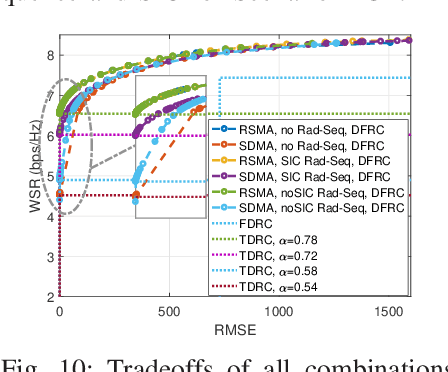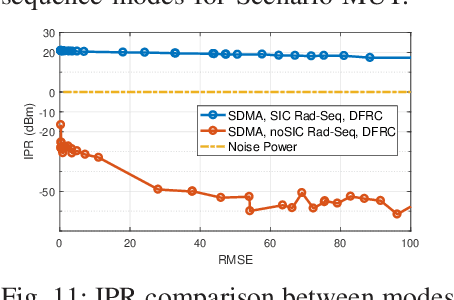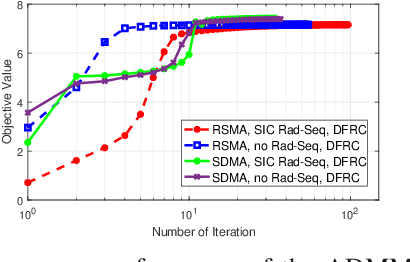Rate-Splitting Multiple Access for Multi-Antenna Joint Radar and Communications with Partial CSIT: Precoder Optimization and Link-Level Simulations
Paper and Code
Jan 25, 2022



Dual-Functional Radar-Communication (DFRC) systems have been investigated to manage the inter-system interference between radar and communication systems. However, the studies in literature often assume that the DFRC possesses perfect Channel State Information at the Transmitter (CSIT), which is an unrealistic assumption due to the inevitable CSIT errors in practical deployments. In this work, we aim to design a DFRC system under the practical assumption of partial CSIT. To achieve this, the proposed DFRC marries the capabilities of a Multiple-Input Multiple-Output (MIMO) radar with Rate-Splitting Multiple Access (RSMA). RSMA is a powerful downlink communication scheme based on linearly precoded Rate-Splitting (RS) that partially decodes multi-user interference (MUI) and partially treats it as noise and is inherently robust to partial CSIT. Using RSMA, the DFRC precoders are optimized in the presence of partial CSIT to simultaneously maximize the Average Weighted Sum-Rate (AWSR) under Quality-of-Service (QoS) constraints and minimize the DFRC beampattern Mean Squared Error (MSE) against an ideal MIMO radar beampattern. Simulation results demonstrate that the RSMA-based DFRC largely outperforms DFRCs based on other commonly used strategies such as Space Division Multiple Access (SDMA) and Non-Orthogonal Multiple Access (NOMA). Specifically, the common stream unique in the RSMA-based DFRC allows for flexible rate partitioning to guarantee user rate fairness with partial CSIT while also being the main contributor to generating a directional beampattern for effective radar sensing. The practical performance of the DFRC is then further assessed through Link-Level simulations (LLS) to take into account the effects of coding and modulation in the finite length regime as well as the channel aging due to mobility and latency, where the superiority of RSMA is again corroborated.
 Add to Chrome
Add to Chrome Add to Firefox
Add to Firefox Add to Edge
Add to Edge